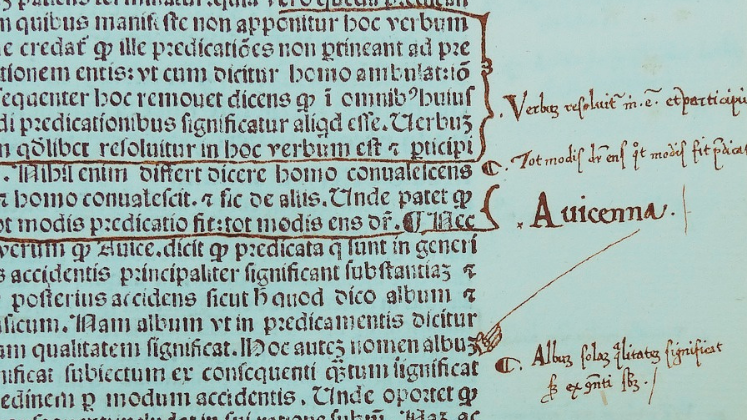 Heidi Laine evaluates the often unsubstantiated claim that the journal article is central to the research communication process. Is a formal article really such a law of nature? She argues that the journal article (at least as we know it) will become a thing of the past. It will soon be replaced by article-style narrative reports, blogs, wikis, video and audio recordings, conference papers and presentations.
Heidi Laine evaluates the often unsubstantiated claim that the journal article is central to the research communication process. Is a formal article really such a law of nature? She argues that the journal article (at least as we know it) will become a thing of the past. It will soon be replaced by article-style narrative reports, blogs, wikis, video and audio recordings, conference papers and presentations.
It seems that the academic article is currently more part of the problem than the solution for the scientific community. The race for the biggest impact and the so called “publish or perish” mentality are responsible for many ethically dubious practices, such as dissecting research results in order to produce the maximum number of articles, inflating lists of referenced articles and co-authors to boost impact factors, and data jealousy (as in – even though I don’t have any use for this data any more, I sure as hell am not publishing it to benefit my competitors). Even though these practices can’t be cataloged under scientific misconduct or fraud, they give science a bad name and jeopardize the quality of published research.
I am relatively new to the research-making scene, so I get to ask basic questions, such as why on earth do we rely on these journals and their articles, hogging money from taxpayers, copyrights from researchers, creating distorted incentives? Does the system serve some function that could not be met by any other means? Let’s see.
Function 1: Dissemination of scientific knowledge
Have you heard of the internet? Let’s go and disseminate there (or here) all day long. Of course there is a possibility of younger, not yet established, researchers losing their voice into the noise, but I don’t think it’s much different in the current situation. There are only so many articles Science and Nature can publish. The challenge of being heard is one that can be overcome by putting more effort into teaching undergraduate and graduate students science communication skills.
 Image credit: Open Authority by Emily Litsey (Wikimedia, CC BY-SA 3.0)
Image credit: Open Authority by Emily Litsey (Wikimedia, CC BY-SA 3.0)
Function 2: Discussing science among peers
I think the journal article fails miserably in this respect, both in speed and inclusiveness. Publishing an article takes ages, publishing a comeback article takes equally long. The amount of people who can play this ping-pong are limited, even if one of the articles has 5000 co-authors. There is loads of academic discussion going on in Twitter, ResearchGate, blogs… Anyone can participate and it’s in real-time. A comment posted on a blog isn’t as thorough as an article, but consider an entire discussion: it can sometimes hold enough novel ideas for a dozen articles. The peer-review gets taken care of on the side, since the discussants are (trolls and other beside the point comments aside) peers reviewing each others contributions. The original Polymath Project is a powerful example of this. (Disclaimer: As a historian by origin I love the monograph, longue durée and histoire totale. I’m all for doing things that require time, thoroughness and narrative. Real-time scientific discussion and taking-your-time research shouldn’t be mutually exclusive.)
Function 3: Maintaining the quality of scientific research through peer review
Journals are not doing too good of a job here either. Think for example of the Michael LaCours case, or Diederik Stapel, father of 60 retracted articles, both of whom published in eminent journals. Another example: an author was asked to add male co-authors in order to “not drift into ideologically based assumptions”. One response to the challenge came last week when an American body called the Transparency and Openness Promotion Committee published their guidelines for journals in Science. Their motivation was to “move scientific communication toward greater openness”. To me, the guidelines are fine, in principle, encouraging journals to demand stronger proof of reproducibility and more data transparency from published-to-be research. The problem is that they lack any mention of open peer review, open source, open data or open access. The article states that “the journal article is central to the research communication process.”, without giving any arguments to back the claim up. Is it really such a law of nature? To me a far better solution than the above mentioned guidelines would be an open peer review, along the lines of Open Science Peer Review Oath. Instead of journals, the review process could be handled by, say, the numerous learned societies, such as science academies and scientific associations (they would need more resources, but when the journals stop bleeding research funders there will be more cake left for everyone).
Function 4: Helping to calculate the impact factor and so determine academic merit
I wonder how anyone in the non-academic world ever gets recruited or funded. I mean they don’t have the impact factor! How can they evaluate the successfulness of a person/business/endeavor without journal-based metrics? Oh, they evaluate each case individually and qualitatively, looking for examples on their CVs, noting the things they have accomplished, talking to them in order to find about their personality, their competences, etc.? I mean who does the impact factor really serve? The government, the accountants? Not science, that’s for sure. If the government can cut funding without first checking the impact factor or Publication Forum classification, they should be capable of doing the opposite as well.
It’s starting to feel like an emperor without clothes type of situation and I’m going to call it if no one else will: Open Access publishing is a transition period solution. The journal article (at least as we know it) will become a thing of the past, and rather sooner than later. It will be replaced by article style narrative reports, blogs, wikis, video and audio recordings, conference papers and presentations, documentary films, whatever. This might sound like uncontrollable chaos and it probably is. But why try to herd cats, when you can watch them on a cute viral video? We are already finding our daily dose of information via peers, social media, traditional media, random googling and whatnot. The age of authorities like the aforementioned Nature and Science is going, going, gone. We just have to live with it. I think we’ll manage fine. (Second disclaimer: I too am planning on writing and publishing articles. I have to do that in order to have my dissertation formally approved.)
BTW, the Open Knowledge Foundation Finland Open Science Working Group (jeez, we need a catchier name) is planning on a workshop proposal for the Academic Mindtrek Conference about this issue (Publication Forum classification level 1!).
This piece originally appeared on the author’s personal blog and is reposted under Creative Commons Attribution licence CC BY 4.0.
Note: This article gives the views of the authors, and not the position of the Impact of Social Science blog, nor of the London School of Economics. Please review our Comments Policy if you have any concerns on posting a comment below.
Heidi Laine (@heidiklaine) is a doctoral candidate at the University of Helsinki. Her research focuses on responsible conduct for research. She also coordinates the Open Knowledge Finland Open Science working group.








I can see lots of potential for a system without journal articles at its core. However, I think the article misses the large number of advantages that articles have and provide. Three hundred-odd years of development through various technological developments, metrics developments and peer review developments don’t come cheap or easy.
The huge social collaboration of science is served by structure (the article and journals and the subsequent infrastructure). Journal names and brands help readers filter work. Metrics help highlight work of interest. Peer review developed to help editors and a growing and wider readership judge veracity and importance. The SCN discussions often have articles at their core, or at least a starting point. There’s an essay more of other things.
So I think a more rounded, fuller exploration would help the discourse and help us all find better ways of using the Internet and tech to improve science communication.
I like the idea of the journal article giving way to more equitable mediums, but this seems somewhat unrealistic. There will still be some kind of mechanism for privileging some voices over others. The question is: what will this filter system look like in the future?
An interesting proposition, Heidi.
However, i don’t think a shift away from the traditional peer-reviewed journal article will happen any time soon, or, at least, not before the research community has agreed on alternative systems of measuring research impact. Such new metrics would then also prevent academic publishing from drifting into “uncontrollable chaos”.
Thank you for the comments! I understand that the current publishing system is complex and has a long history behind it. But I feel that it has seized to create the kind of added value that would justify the cost (subscription fees as well as the inefficiency created by knowledge behind pay-walls). With the economic situation Europe is facing it is becoming harder and harder to justify the flow of tax payer money to big publishing houses. Public research funders have a lot to gain from supporting open science. I value peer review and the work reviewers do, but what is the service or reward that reviewers get from journals that couldn’t be provided by some other actor? Most reviewers work for free, and it is hard work. Why do they donate their labour to big companies with profit margins as high as 36%? Would you work for free for Exxon, HSBC or Toyota? Why is Elsevier different? I recently read that the European Science Foundation will focus in the future on peer review, among a few other things. What that means in practice I don’t know yet, but if they were to choose so they would be able to provide a powerful alternative model to peer review by journals. I’m not saying that there won’t be authorities in science publishing in the future too, but they will be different ones and there will be more of variety than today is the case. And hopefully they will be owned by the research community, not corporations. It is of course impossible to say for certain how the situation will evolve. This text is just as much, or even more so, about what I would like to see happen as what I think is likely.
Peer review is valuable to scholars in many ways. For instance, if they do a review there is a reasonable expectation that they will get reviews back on their own work at some stage. Most journals get two peer reviews per article, so there is a weighting on the system from the start. When they do peer review, they learn about new work and formally implement their critical faculties, as well as being part of the community and getting to know it. When they recieve peer reviews, a large proportion are helpful and improve their work. So there is real and tangible benefit which flows in more than one direction. The comparison to Exxon or whatever is just way off beam for me and has no equivalence at all.
Also, the old saying of ‘why do they do it for free’ is often a call for those wanting change (to probably benefit their own ends!), but that is probably about it. There’s deep and valuable ‘thought’ commerce being undertaken. This is the bread and butter of research, at least until now.
IMO, it may well be that as science and science comms and technology change, then peer review and how it is done will change. But what replaces it will have to add value, not just be change for the sake of it.
I am not arguing against peer review and/or doing it without monetary compensation. What I’m trying to say is that the system needn’t be in the hands of corporations, but instead run by the research community. My question was what is the added value that JOURNALS bring to the equation, vs. f. e. a learned society. I through in Exxon just because it is a big private company, just like the two others mentioned, I could have just as well chosen any other major multinational firms.
“…what is the added value that JOURNALS bring to the equation…”
That’s a great question. This post presents an answer from the perspective of scholarly publishers (not only the Big 5):
https://scholarlykitchen.sspnet.org/2016/02/01/guest-post-kent-anderson-updated-96-things-publishers-do-2016-edition/
If a learned society (especially run on volunteers) is not able to offer all these services, what services should be prioritised? What would be the minimum core set for a publisher?
“But why try to heard (sic) cats, . . .” Well, that’s one thing among many that publishers, through their editors, sort out – attribution being another.
Important debate.
I have been experimenting with self publishing eBooks and Print. The learning curve is steep, but plenty of scope for innovative ideas, for example in inviting collaboration as the work develops.
I see an analogy of ‘broadening the band width’. I am particularly attracted to publishing for a wider readership while holding on to academic standards.
Many things are changing at present time one of them are transmission of scientific knowledge with communication and information technologies I absolute agree with your main ideas free information , of good quality, peer reviewd
Of course this will originate a lot of criticism and resistance of the ones that get hundreds of millions
Lets wait organize smart people as you and watch future events